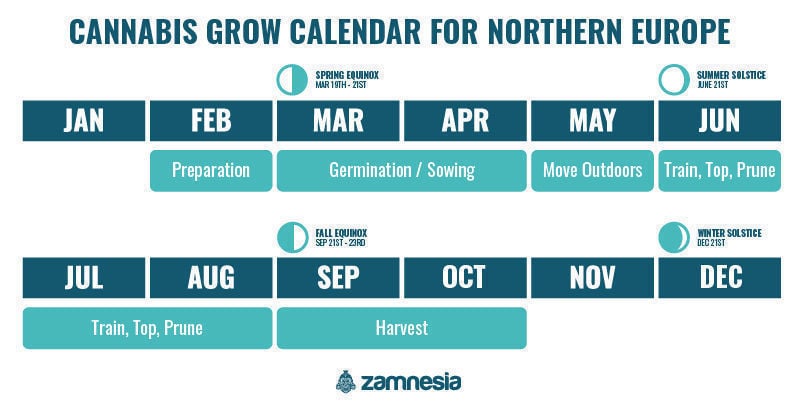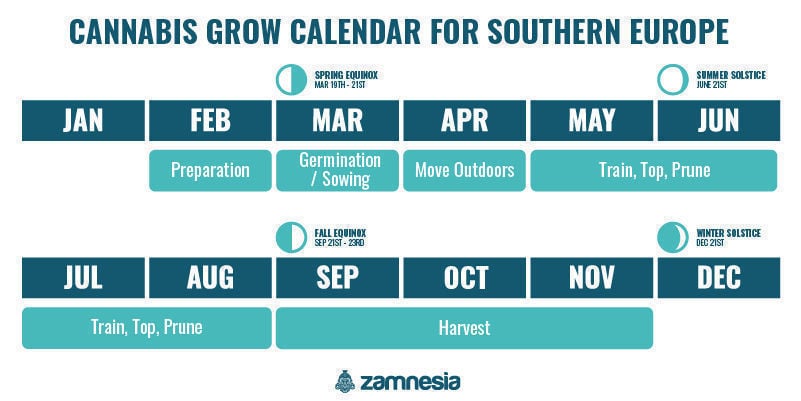Zamnesia's Outdoor Cannabis Grow Calendar
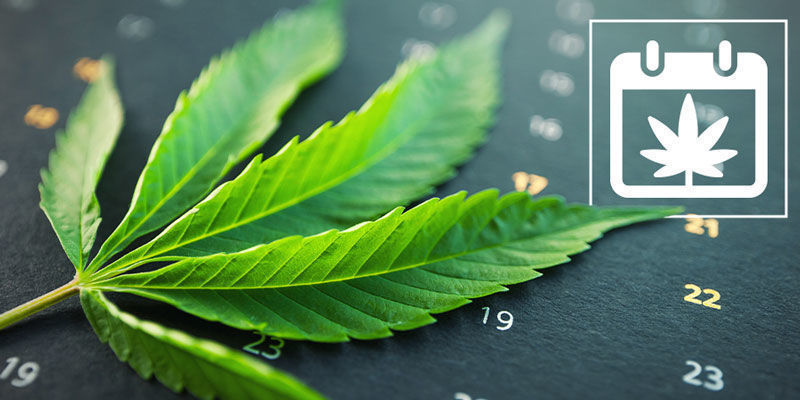
Zamnesia wants to make sure you get your timing and species selection spot-on to produce luscious crops every grow season. Whether you live in Northern or Southern Europe, let us help you germinate at the right time for vigorous vegetation and big yields.
Timing is everything, and this couldn't be truer for outdoor cannabis cultivation. But do you have to live in a Mediterranean climate for plants to flourish? On the contrary, you can achieve a successful harvest by making the best of the conditions in your region, and by planning your grow appropriately. So, how do you go about doing so? Allow us to guide you through the entire outdoor cultivation process—including strain selection, when to germinate, transplant, top, train, and more—so you can produce high-quality herb no matter your location. We've got you covered.
The differences between northern and southern Europe

What better place to begin than with location itself. How you plan the rest of your outdoor grow ultimately comes down to your local climate. Cannabis plants are much more resilient and robust these days, but they still need to be grown at the right time to flourish and avoid potential issues.
Whether you live in northern or southern Europe, each territory brings its own benefits and pitfalls to cannabis cultivation. So it’s key to work with what you have, and try to mitigate what you don’t.
For example, although growers living in cooler climates might not benefit from the heat and sun of southerly regions, they may not have to deal with the degree of pests and moulds that Mediterranean growers are faced with. Moreover, some strains are naturally cold-hardy and enjoy cooler average temperatures. That said, growers in these areas will have to contend with a shorter overall growing season.
Of course, those growing weed outdoors in southern Europe will find themselves with an abundance of direct sunlight and heat, which also means early germination and later harvesting. However, with the increase in temperature, arguably more maintenance is required to ensure plants are well taken care of and able to perform to the best of their ability. And while some cultivars might fall victim to pests and plagues if neglected, certain strains are naturally primed to thrive in hot, sultry conditions.
Suitable strains for northern climates
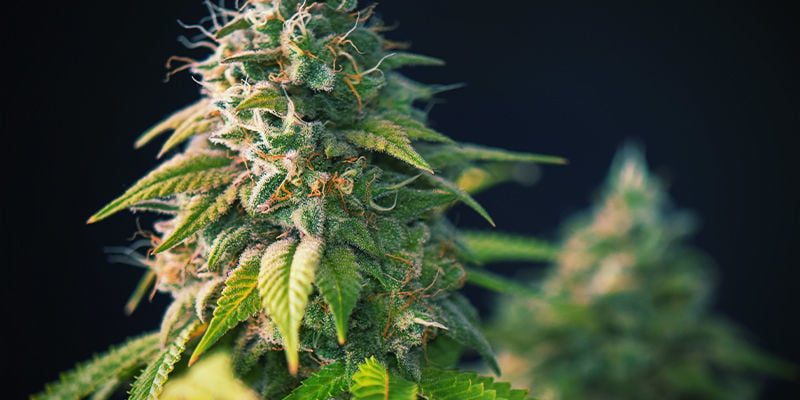
With strains in mind, we can begin to discuss the ideal selections for different climates. When it comes to cultivating in northern Europe, indica-dominant strains are your friend, as are autoflowering varieties. Since the cannabis diaspora over 12,000 years ago, indicas have developed characteristics dictated by their evolution in cool, mountainous regions with early, intense winters and short summers.
Autoflowering strains have a number of advantages in cooler environments, one of which being they do not rely on sunlight to progress from vegetation into flowering. This also makes for a speedier grow cycle and allows some growers, even those in northern climates, to potentially harvest multiple crops in one season. Indica autoflowers have a double whammy of cold tolerance and quick-flowering genetics, making them a tried and true option for growing cannabis in colder climates.
Suitable strains for southern climates
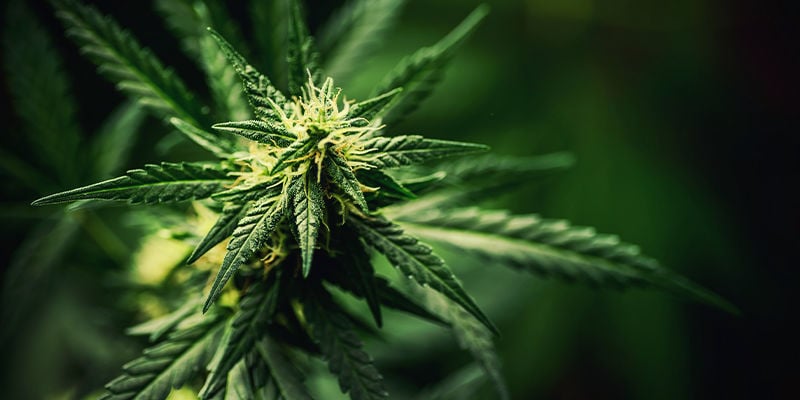
Southern climates are typified by warmer average temperatures, longer days, and a longer growing season to boot. Cannabis originally evolved in these types of environments before it was spread all over the world. Similar to that of other plants, there is something deep within cannabis that makes it thrive in warm, sunny, and humid climates.
Growers in hot and dry microclimates are able to grow essentially whatever strain they like. That said, most sativa varieties are very tolerant to direct sunlight, whereas some indicas, for example, will perform better with intermittent shade.
Humid coastal microclimates still get the benefit of lots of sun, but humidity can pose a challenge, especially during flowering when the density of the buds increases significantly. Pests, pathogens, and mould are more likely to occur if an area experiences sea mist, fog, or regular rainfall, so it’s wise to select cultivars known to be mould-resistant. Highly resinous plants tend to fight off mould better than those with less resin. Likewise, airy, fluffy sativa buds are more equipped to resist bud rot than denser, bushier indicas.
As you can see, regardless of whether you live in a northern or southern part of Europe, the options of seeds are extensive.
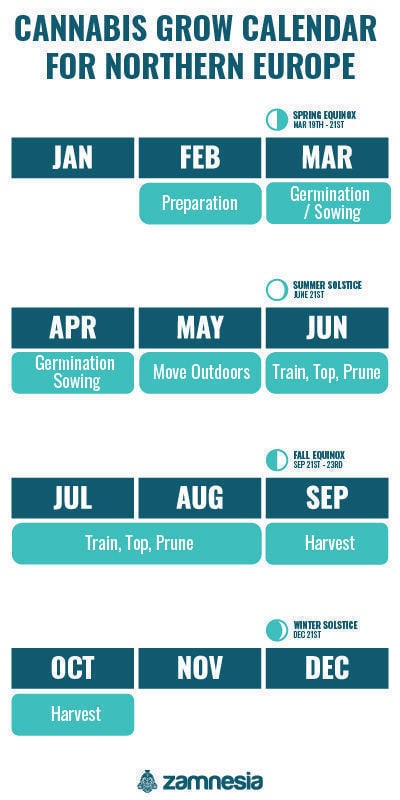
So, now that you’re aware of which types of cultivars are best suited to your environment, it’s time to plan out your grow. In what follows, we break down what you should (and shouldn’t) be doing each month if you're growing in northern Europe. Spanning from germination all the way to that eventual harvest, no time is wasted throughout the year to produce some truly sublime buds. Note that the following guide is based around feminized photoperiod cannabis varieties; we’ll discuss autoflowers later on.
Preparation (February)
As arguably the most important step in any growing project, preparation encompasses everything from purchasing seeds and growing accessories to planning out an ideal location.
When it comes to accessories, think about your growing area. Is it an open plot of land? Or a contained balcony? This will influence your purchases greatly, as it dictates whether you’ll need to get growing containers, and of which type and size. While a large fabric pot might work for outdoor growers with access to garden beds, this is less possible for someone with a small balcony. So it's best to do your research and be realistic when shopping around.
Alongside a selection of containers and accessories, providing your plants with the right level of nutrients is also of the highest importance. Nutrients come in all types and cater to all different plant growth stages. For example, this could be soils rich in particularly important nutrients for that stage of life, or additional feeds. There are many different kinds of nutrients available to aid your plants. So if you feel this is something you're looking to implement into your growing project, be sure to check them out.
As discussed above, seed selection is crucial to a successful grow. Based on the information provided above, consider which strains are most likely to flourish in the home you create for them. As discussed, indica-dominant strains are the safest bet in northern Europe, although specific cultivars may be more suitable than others, so do adequate research to find a good fit.
Germination / Sowing (March & April)
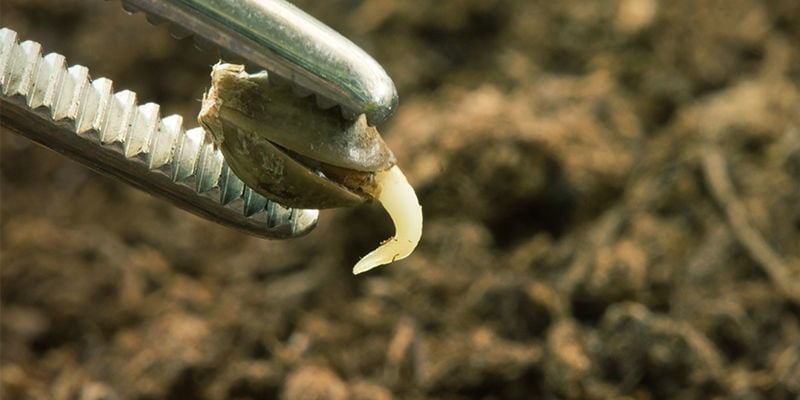
Once you have your seeds and accessories, and the weather starts to warm slightly, it's time to really kick off your growing project. This is typically carried out in the spring months of March and April.
When it comes to germination, this can be achieved in several different ways. Germination pods, such as Smart Start pods, provide seeds with the perfect amount of soil to sprout in a short amount of time. A dedicated kit, complete with a propagator, simulates greenhouse conditions, giving seeds the high level of moisture required to “pop”. However, other methods, such as placing your seeds between moist paper towels or dropping them in a glass of water, can also work, but have mixed results.
Though you can in theory sow seeds straight into the soil, it’s likely too early in the year to do so outside. As a rule of thumb, seeds should be germinated indoors as they need to be monitored, maintained, and kept warm to sprout.
Once the seeds have grown into seedlings with a couple of “true” leaves, they can be moved into larger containers, ready to grow outside.
Move outdoors (May)
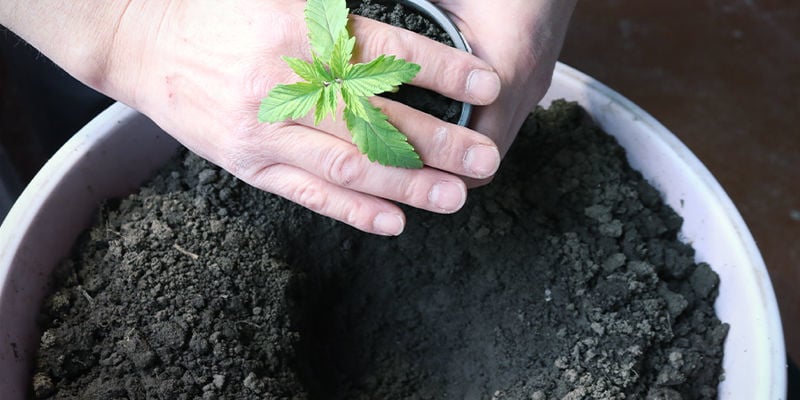
Mid-spring is the ideal time to prepare your plants for the impending sunlight and heat of summer. Even in cooler climates, with temperatures typically averaging 12–15°C, as long as there is no risk of frost or heavy, cold rain, your young plants will thrive simply from being subjected to the rays of the sun.
To make the transplant to a larger container or bed, loosen the soil around your seedling and you should find that it pops out of its container, complete with the surrounding soil. Now it's simply a case of giving it a new home in a dedicated flowerbed or a larger container. As mentioned, this will primarily be down to the constraints of your space.
From here, it’s essential to ensure your vegging plants have access to plenty of nutrients, and to find a watering schedule that works for your grow. Don’t fall victim to overwatering. Once your plants are acclimated and happy in their new environment, you can start to consider training methods to achieve the best harvest possible.
Train, top, prune (June, July, August)
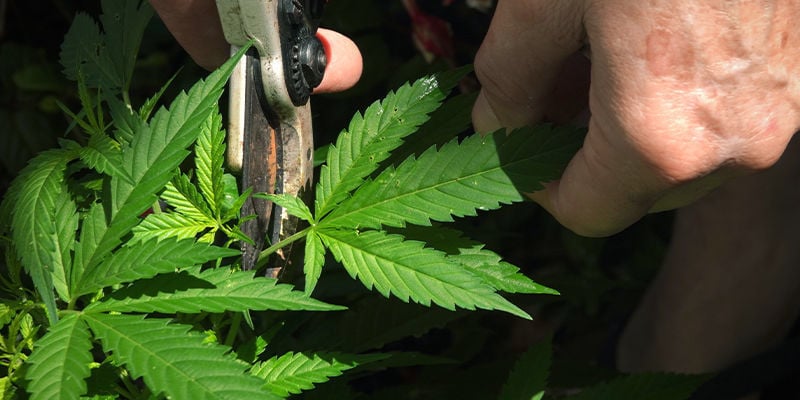
It's no secret that plants can grow a little unruly when left to their own devices, so it's paramount to keep them in check. During peak vegetation (June and July), sunlight should be at its most available. While you can leave plants to flourish naturally, those looking to maximise returns can look into various methods of training.
LST (low-stress training) is an effective and straightforward way to boost plant health and production. This is achieved by bending and tying down the main stem of the plant, which encourages lateral growth and more even light distribution. So rather than producing one central cola, plants have the potential to produce an abundance of buds on different sites. It may take a little practice to get down, but it is easily achievable for even the newest of growers.
Another, slightly more advanced method is topping. When your plant reaches roughly 30cm in height, it's time to give it the chop. Take your pruning scissors and cut the main stem just above the fifth node. While this may feel as though you're ruining the plant, it will compensate by producing two main colas instead of one, resulting in larger yields.
Lastly, keep up a regular pruning ritual throughout the vegging phase. Many choose to trim the lower branches so the plant can concentrate its energy into the areas closer to the light. But be careful not to overdo it, as over-pruning can stunt and disrupt growth. Every time you inflict any sort of high-stress technique like this, plants require at least a week to recover, so prune wisely.
As the weeks continue, you'll notice your plant really beginning to take on mass. Keep up the maintenance, and your plant should effortlessly transition into the flowering stage.
Photoperiod weed plants naturally bloom as light hours decline throughout August in the Northern Hemisphere. At this point, you should stop any high-stress training, as now the focus is on bud development. For northern growers fearful of the impending fall, you can get a head-start on the flowering period by creating a light deprivation system. Using a blackout material of some sort, you can trick your plants into thinking autumn is closer than it is, resulting in a quicker harvest.
Harvest (September & October)
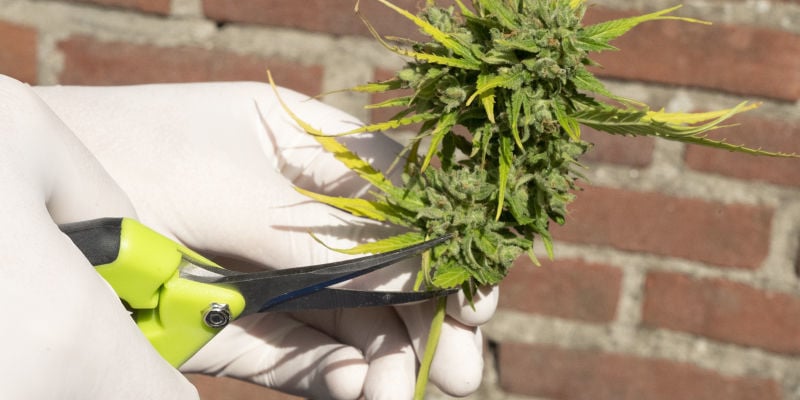
Now is the moment you've been waiting for; harvesting. Your plant will be ready to yield from late September to late October. As daylight hours decrease and the warmth from the summer recedes into a bitter cold, it's time to grab your pruning scissors and get to work on collecting those buds.
Plants are ready to harvest when around 70% of the trichomes are cloudy. Depending on the weather and the stage of maturity of your buds, you can choose to perform a progressive harvest instead of chopping the entire plant at once. A progressive harvest involves harvesting branch by branch until all the buds are equally mature. This also makes for less work in one day.
Once harvested, it's time to enjoy the fruits of your labour.
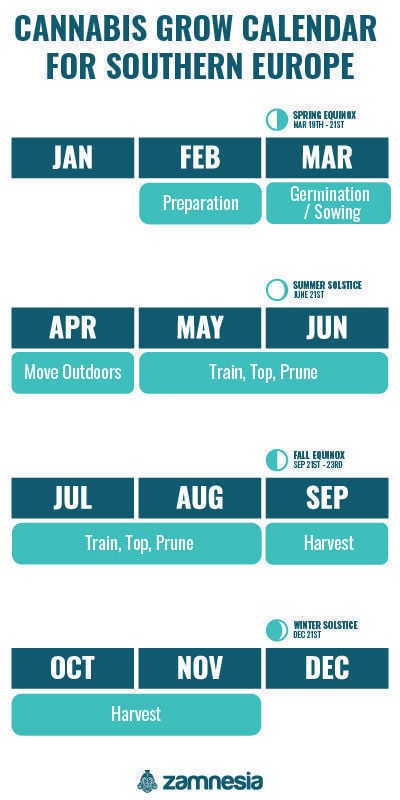
As we know, the southern regions of Europe bring an abundance of light and warmth, providing the perfect environment for many cannabis strains. With higher temperatures throughout the year, the overall calendar is a little more lenient than that of a northern growing project. While there are many similarities in how you deal with your plants, there are a few key differences to consider.
Preparation (February)
As previously mentioned, preparation is hugely important no matter where you grow, and will largely reflect your growing space and preferences. There are no differences between the accessories you'll need for a growing project in warmer temperatures, but you'll arguably have a more extensive selection of seeds to choose from, including sativa-dominant strains with longer flowering periods. Nutrients also have a place in hotter climates and can be used in similar situations to plants grown in colder regions.
Germination / Sowing (March)
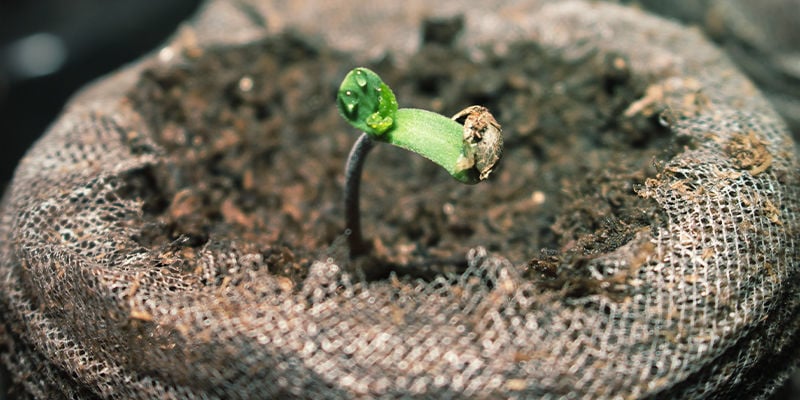
As early as late February, it's entirely possible to germinate seeds. This can be achieved either indoors or, if you have access, a greenhouse. The same principle applies as before, in the sense that seeds should be germinated and left to grow into hardy seedlings before moving to a container or bed. If germinating in a greenhouse, seeds will require an additional light source to begin sprouting, so it's advisable to implement some CFL grow lights.
However, waiting just a little longer until March will open up the luxury of germinating seeds outside. With temperatures hitting around 16°C, this is the right setting for seeds to really flourish. Take your seeds and plant them directly into the soil. Apply a little water and allow them to do their thing. This is a great germination method as it also prevents any potential cross-contamination from handling the seedlings when transplanting.
Move outdoors (April)
When it comes to moving your plants outside, the process is very much the same in a warmer climate as that of a colder environment. However, the luxury lies in being able to do this as early as late March or early April. With temperatures peaking at around 19°C and daylight hours increasing, your seedlings will bask in the available sun. Whether you're looking to relocate them to a garden plot or balcony, treat your plants with care and provide them with the right amount of warmth and sunlight.
Train, top, prune (May, June, July, August)
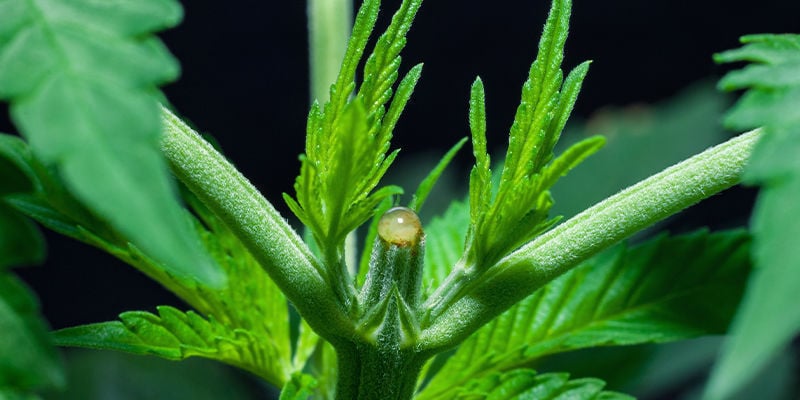
In late spring and early summer you can consider topping and training. As your plants have plenty of time to recover before late summer comes, you can try methods like super cropping and multiple topping sessions.
With temperatures in the region of 23°C and sunlight being plentiful, your plants will need as much heat and light as physically possible. As before, keep a strict maintenance cycle, and your plant will thank you.
As mentioned, plants growing in warmer environments are more susceptible to pests and mould, so be on the lookout for any signs of trouble. There are many different ways to combat infection, but it's always best to try and avoid it at all costs. A routine maintenance check will keep you up to date on each plant's health.
Harvest (September, October, November)
After a long summer, it's time to reap your rewards. Many quick-flowering strains will be ready to harvest between the middle and end of September, whereas strains that take a little longer, such as landrace sativas, will make the most of the entire summer, ready to harvest in late October or even early November.
Growing autoflowers outdoors
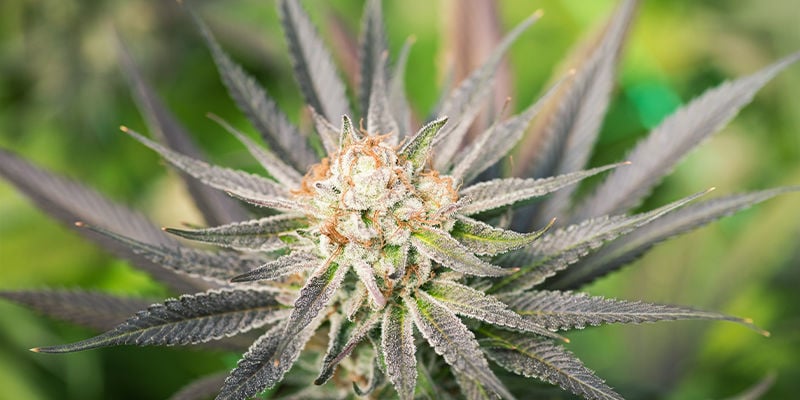
While feminized photoperiod strains are a perfectly viable option for growing outdoors, they can take a little getting used to and require a more hands-on approach. Moreover, their development is dictated by light exposure, which means you’re essentially at the whims of Mother Nature. This can be especially tricky for those new to cultivation. With that in mind, a more accessible approach is to use autoflowering strains.
These strains naturally only veg for about 3 or 4 weeks before automatically progressing into bloom. As a result, most autos are ready to harvest in around 10–12 weeks. This means growers can achieve multiple outdoor harvests per season, even in some northern regions. Mediterranean growers can easily achieve three harvests if timed right.
To plan your grow calendar for an autoflower, it’s best to choose your desired harvest date, and count backwards from there according to the expected life cycle for your strain. So, if you want to harvest on October 1st, and your strain has a life cycle of 12 weeks, you’ll want to make sure germination is completed by June 1st. Autoflowering strains can be safely placed outside any time from mid-May until the middle of September in most climates.
While high-stress training techniques like topping aren't really appropriate for autoflowers, LST can be implemented in the plant's early phase to maximise yield later on.
Important dates for outdoor cultivation

While a grow calendar gives you an in-depth breakdown of when and what you should be doing to your plants, it really needn't be a complicated process. Simply by timing your project with the seasons, it will be easy enough to achieve a satisfying harvest.
When the spring equinox rolls around, that's a clear indication it's time to start germinating your seeds. By keeping an eye out for the summer solstice, you'll know exactly when your plants are ready to soak up all the light and warmth the next couple of months have to offer. The fall equinox will be the clearest indication that your plants are nearing the end of the flowering cycle. You’ll harvest them within a number of weeks after this point. Once collected, spend the winter solstice drying, curing, and most of all, enjoying, the fruits of your labour.
Moon phases & cannabis cultivation
While it might sound a little far-fetched, many cannabis growers are turning to the moon to help their plants flourish. This is a practice known as moon gardening. It's essentially about taking advantage of the moon's lunar cycle and subsequent gravitational pull. Each month, the moon has a “waxing” phase. Over the course of the cycle, the moon becomes brighter, eventually resulting in a full moon. The brightness gradually decreases, and the cycle begins again.
While the moon is no doubt impressive in this state, many believe that the moisture in the ground rises because of the moon's gravitational pull. This is arguably the best time to germinate seeds outdoors or transplant seedlings, as they will benefit from the increased moisture in the soil, resulting in healthier, stimulated, and more productive plants.
Given this improved strength, plants are believed to be more resilient against pests and other forms of infection. Of course, while there are many that claim moon gardening works for them, there is an argument that it doesn't really make much of a difference. Perhaps give it a try to see for yourself.
Time to get outdoors!
Now that you've checked out our calendar, it's time to get out into the great outdoors and cultivate some top-tier cannabis. With a little care and good preparation, you can't go wrong!












 United States
United States

